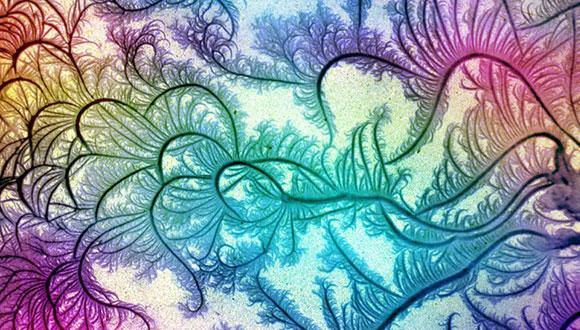The recently predicted topological magnetoelectric effect [1] is a fundamental attribute of topological states of matter with broken time reversal symmetry, and is the underlying mechanism of the quantum Hall effect. Using a scanning SQUID-on-tip [2], acting as an ultrasensitive nanoscale magnetometer, we directly image the equilibrium currents of individual quantum Hall edge states in single layer graphene for the first time [3]. We reveal that the edge states, which are commonly assumed to carry only a chiral downstream current, in fact carry a pair of counter-propagating currents [4], in which the topological downstream current in the incompressible region is counterbalanced by a heretofore unobserved non-topological upstream current flowing in the adjacent compressible region. We then apply the same technique to the recently discovered magic angle twisted bilayer graphene (MATBG). We attain tomographic imaging of the Landau levels [5], which provides a highly sensitive local probe of the charge disorder, twist angle θ and band structure. We obtain a map of local θ variations with relative precision better than 0.002° and spatial resolution of a few moiré periods. We find that devices exhibiting high-quality global MATBG features including superconductivity, display significant variations in the local θ with a span of ~0.1°. Devices may even have substantial areas where no local MATBG behavior is detected, yet still display global MATBG characteristics in transport, highlighting the importance of percolation physics. The derived θ maps reveal substantial gradients and a network of jumps. We show that the twist angle gradients generate large unscreened electric fields that drastically change the quantum Hall state by forming edge states in the bulk of the sample. These electric fields may also significantly affect the phase diagram of correlated and superconducting states.
-
X.-L. Qi, T. L. Hughes, and S.-C. Zhang, ''Topological field theory of time-reversal invariant insulators'', Phys. Rev. B 78, 195424 (2008).
-
D. Vasyukov, Y. Anahory, L. Embon, D. Halbertal, J. Cuppens, L. Neeman, A. Finkler, Y. Segev, Y. Myasoedov, M. L. Rappaport, M. E. Huber, and E. Zeldov, ''A scanning superconducting quantum interference device with single electron spin sensitivity'', Nat. Nanotechnol. 8, 639–644 (2013).
-
A. Uri, Y. Kim, K. Bagani, C. K. Lewandowski, S. Grover, N. Auerbach, E. O. Lachman, Y. Myasoedov, T. Taniguchi, K. Watanabe, J. Smet, and E. Zeldov, ''Nanoscale imaging of equilibrium quantum Hall edge currents and of the magnetic monopole response in graphene'', arXiv:1908.02466 (2019), accepted for publication in Nat. Phys.
-
M. R. Geller and G. Vignale, ''Currents in the compressible and incompressible regions of the two-dimensional electron gas'', Phys. Rev. B 50, 11714–11722 (1994).
-
A. Uri, S. Grover, Y. Cao, J. A. Crosse, K. Bagani, D. Rodan-Legrain, Y. Myasoedov, K. Watanabe, T. Taniguchi, P. Moon, M. Koshino, P. Jarillo-Herrero, and E. Zeldov, ''Mapping the twist angle and unconventional Landau levels in magic angle graphene'', arxiv:1908.04595 (2019), under review in Nature.
Event Organizer: Prof. Sasha Gerber


